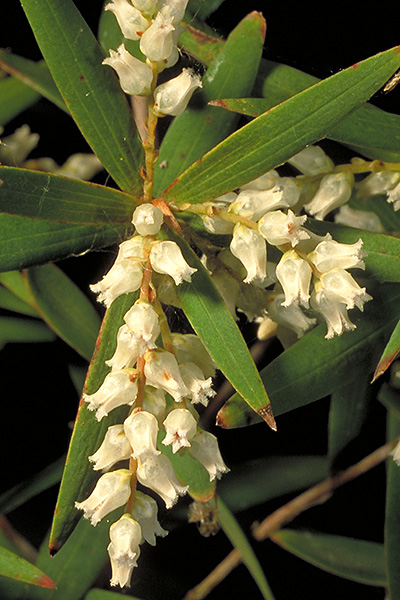General Description:
The plant family Ericaceae (heaths and heathers) is widespread in many parts of the globe, particularly Europe and South Africa. It contains a number of widely cultivated plants such as Erica, Rhododendron and Pieris.
Like most of Australia’s members of the Ericaceae, Styphelia belongs to the subfamily Epacridoideae, which was formerly classified as a separate family, the Epacridaceae. Styphelia is closely related to Epacris, the main difference being the distinctly hairy inner surface of the petals in Styphelia.
Until recently, Styphelia comprised 14 species. However, the classification of Styphelia has been contentious for many years and a study carried out in 2020* determined that many species in related genera such as Astroloma and Leucopogon warrant inclusion in an expanded Styphelia genus. This work has been accepted in the Australian Plant Census (which ANPSA recognises as the authority on plant taxonomy). As a result, the genus Styphelia is now regarded as comprising about 260 species distributed from Indo-China through the Pacific to Australia.
In Australia, there are about 150 species found in all states and territories. They range from small to large shrubs with tubular flowers.
This plant was previously known as Leucopogon lanceolatus. However, this prior name was found to be invalid according to naming conventions and it was changed to Leucopogon affinis before being changed again to Styphelia affinis.
Styphelia affinis is a medium to large bushy shrub, usually 2 to 3 metres high but occasionally higher. The lance-shaped leaves are about 2-8 cm long with several distinct veins. Flowering is usually in spring and the small, white flowers are about 4 mm long with hairy lobes and occur in racemes of up to 10 or more flowers.
Few styphelias are seen in cultivation, mainly due to difficulties in propagation and those that have been cultivated have proven to be difficult to maintain. S.affinis is more successful in cultivation than most other species but even it is rarely seen in gardens. It seems to prefer a moist, well drained situation in semi shade.
Propagation of S.affinis is difficult. Germination of seed is usually slow and unreliable using conventional methods. Cuttings are also unreliable and may produce a limited success rate. Cuttings of firm current season’s growth are likely to give the best results and use of a root-promoting hormone is advisable.
* Crayn DM, Hislop M, Puente-Lelièvre C (2020); A phylogenetic recircumscription of Styphelia (Ericaceae, Epacridoideae, Styphelieae). Australian Systematic Botany 33 137–168

Styphelia affinis
Photo: Brian Walters
 Australian Native Plants Society (Australia)
Australian Native Plants Society (Australia)